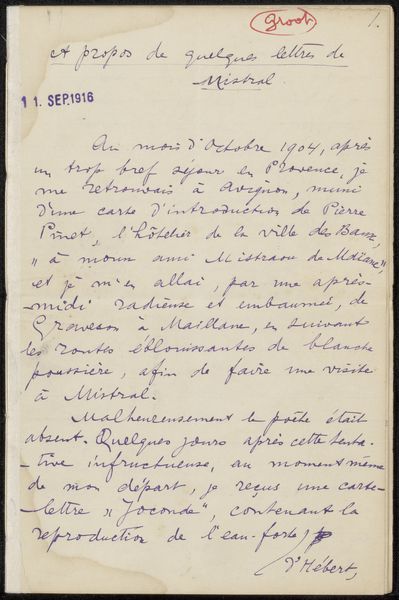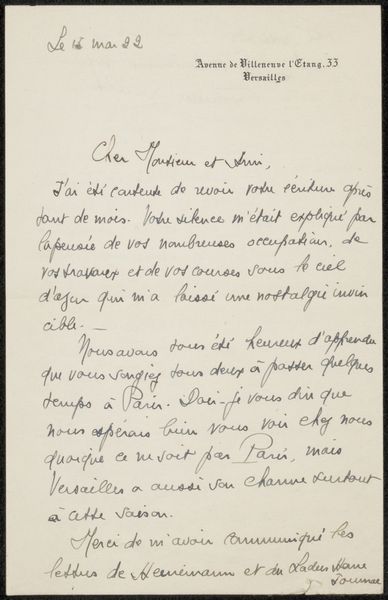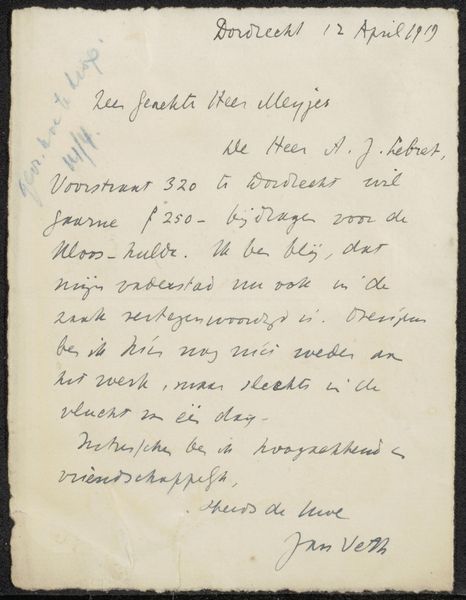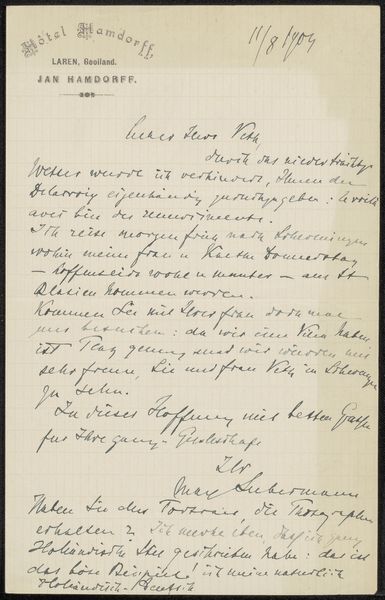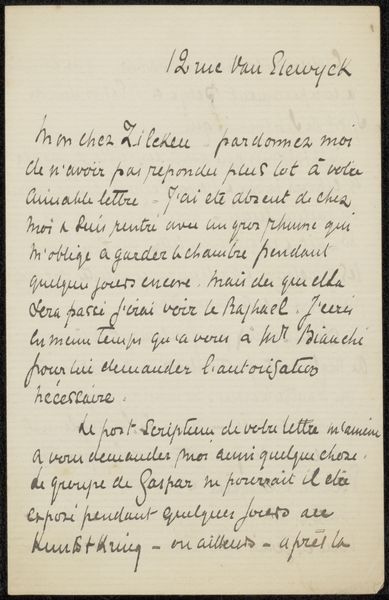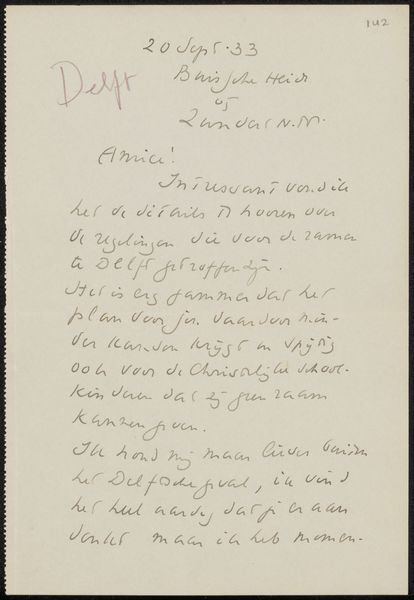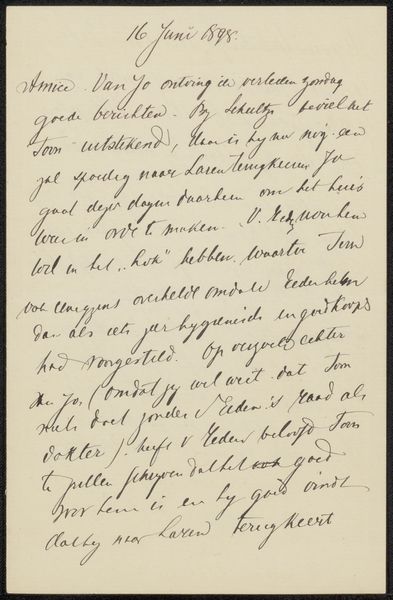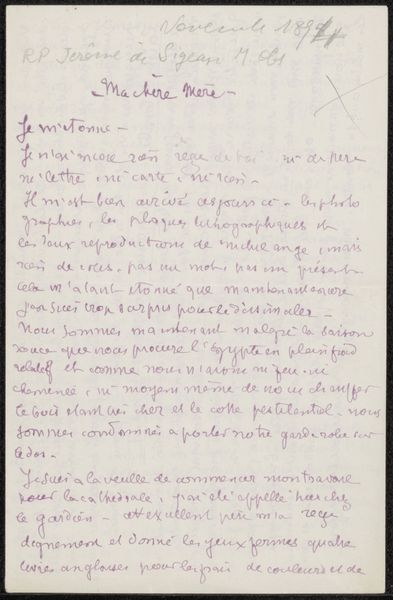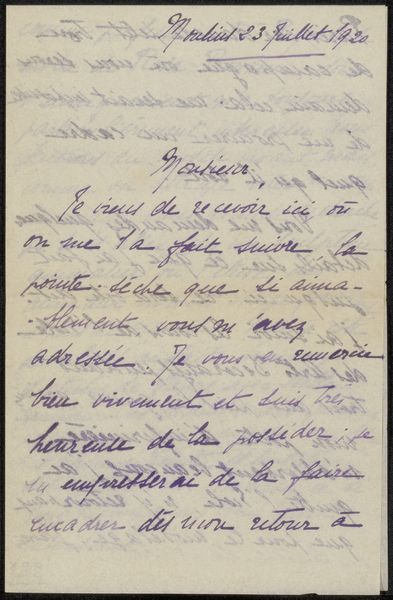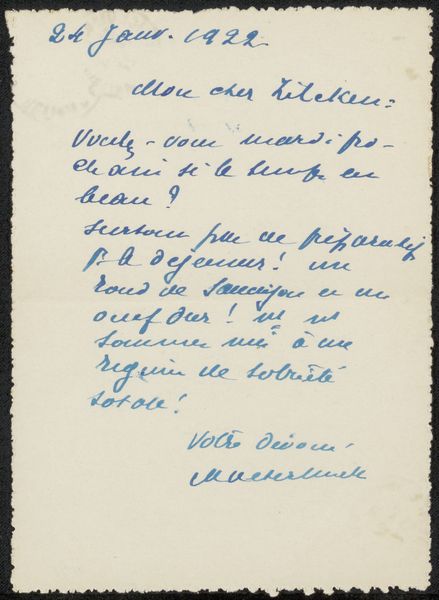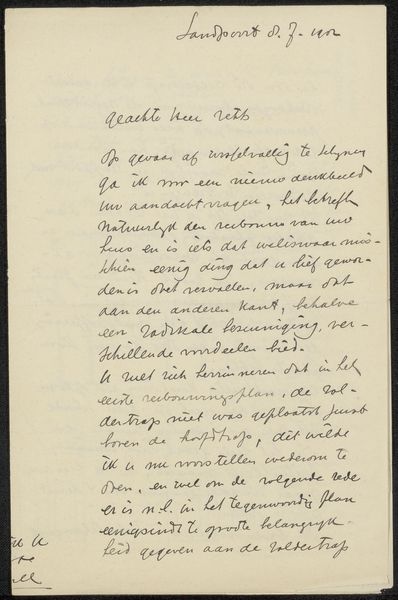
drawing, paper, ink, pen
#
portrait
#
drawing
#
hand-lettering
#
hand drawn type
#
hand lettering
#
paper
#
personal sketchbook
#
ink
#
hand-drawn typeface
#
intimism
#
fading type
#
ink colored
#
sketchbook drawing
#
pen
#
sketchbook art
#
calligraphy
#
small lettering
Copyright: Rijks Museum: Open Domain
Curator: This work is titled "Brief aan Philip Zilcken," and its date is estimated to be around 1923. It seems to be a personal letter rendered in ink on paper. What strikes you first about it? Editor: The handwriting. It’s like a fading memory—delicate, fragile. The ink bleeds slightly into the paper, which gives it a hazy, intimate feel. Curator: The materials are quite telling, aren’t they? A handwritten letter suggests a personal connection, a form of labor-intensive communication that was much more common then than it is now. Think about the accessibility, or lack thereof, during this era versus our access to rapid communication today. Editor: Absolutely. A handwritten letter implicates social position too, though. There's an inherent power dynamic embedded in this exchange—it speaks of class, education, and the leisure time to engage in such correspondence. Who had time to sit and write a letter? Curator: We know the letter is from Maurice Maeterlinck, a Nobel laureate, and judging from the letter itself, he references rehearsals at a theater. Understanding the artistic milieu within which Maeterlinck moved, this exchange probably facilitated future production and was most certainly part of a broader network of artistic output. Editor: It brings into question what it means to produce and value material labor. We must question our position and what is often excluded in canonical stories about artistic production by looking into the contribution from marginalized workers in this cultural economy. Curator: It underscores that these apparently informal interactions were actually vital forms of exchange that ultimately shaped the work we celebrate in the gallery. It is crucial to acknowledge them. Editor: By looking beyond the aesthetic beauty to interrogate the conditions in which art is produced and consumed, we develop new pathways for understanding complex narratives of power, gender, class, and race in art history. I like this, though I fear tea with him! Curator: Me too. Well, in viewing “Brief aan Philip Zilcken” one gets a brief yet telling window into not just the intimate world of this famous figure, but a glimpse into the engine room that facilitates a thriving artistic output.
Comments
No comments
Be the first to comment and join the conversation on the ultimate creative platform.
